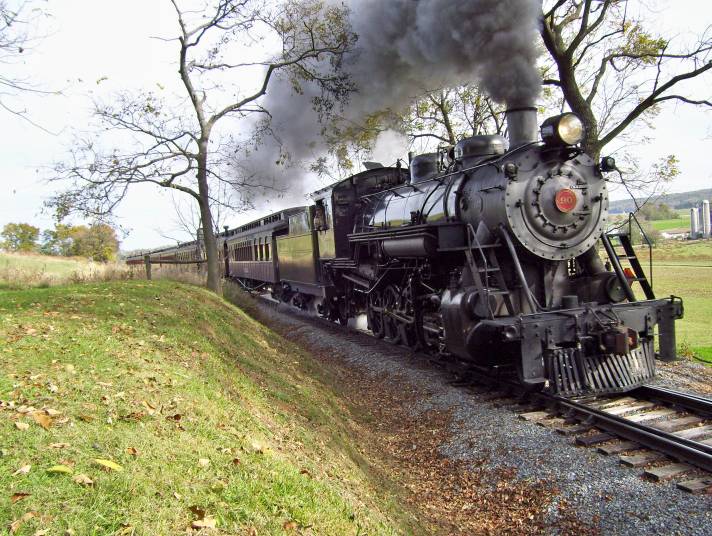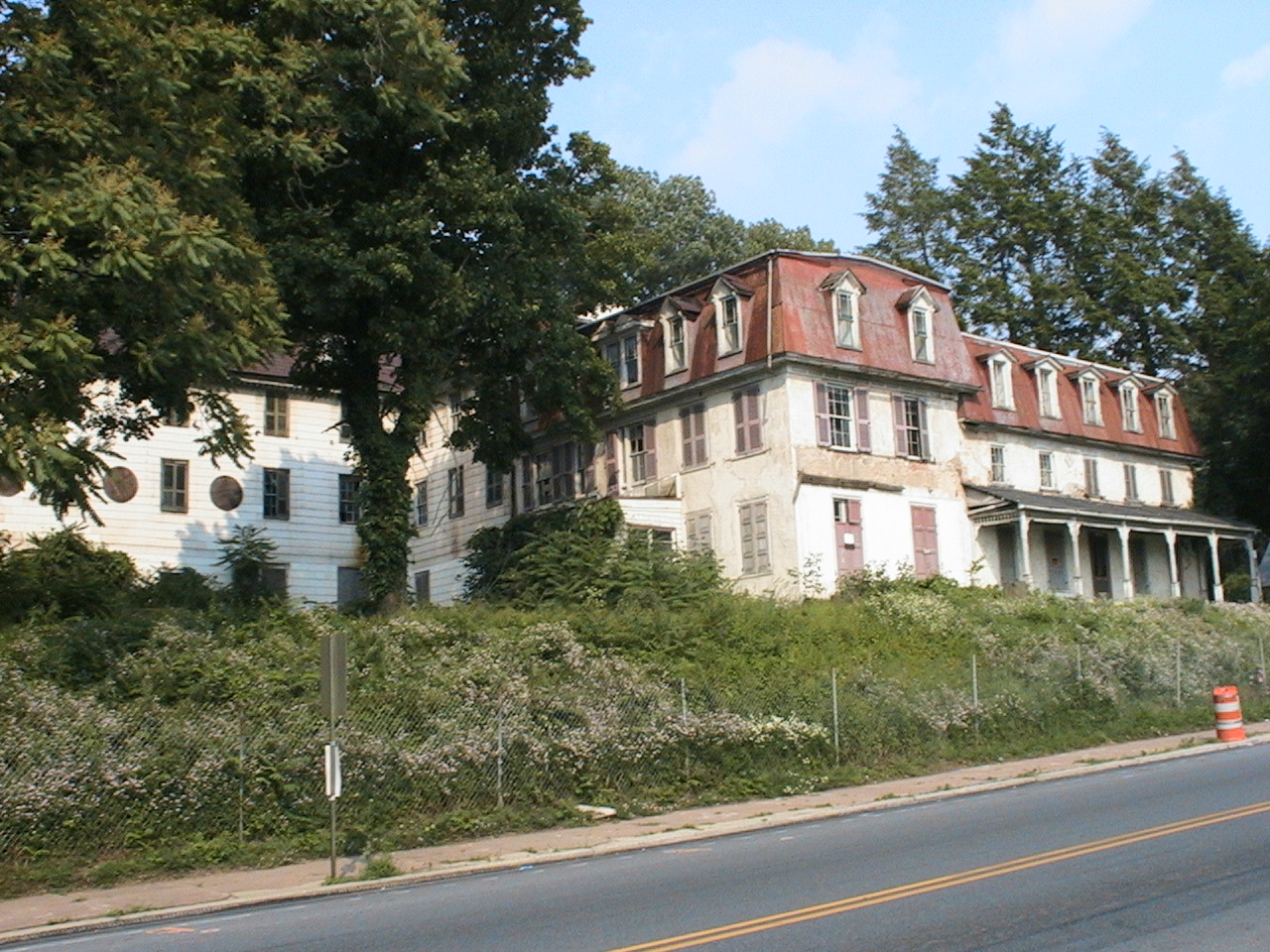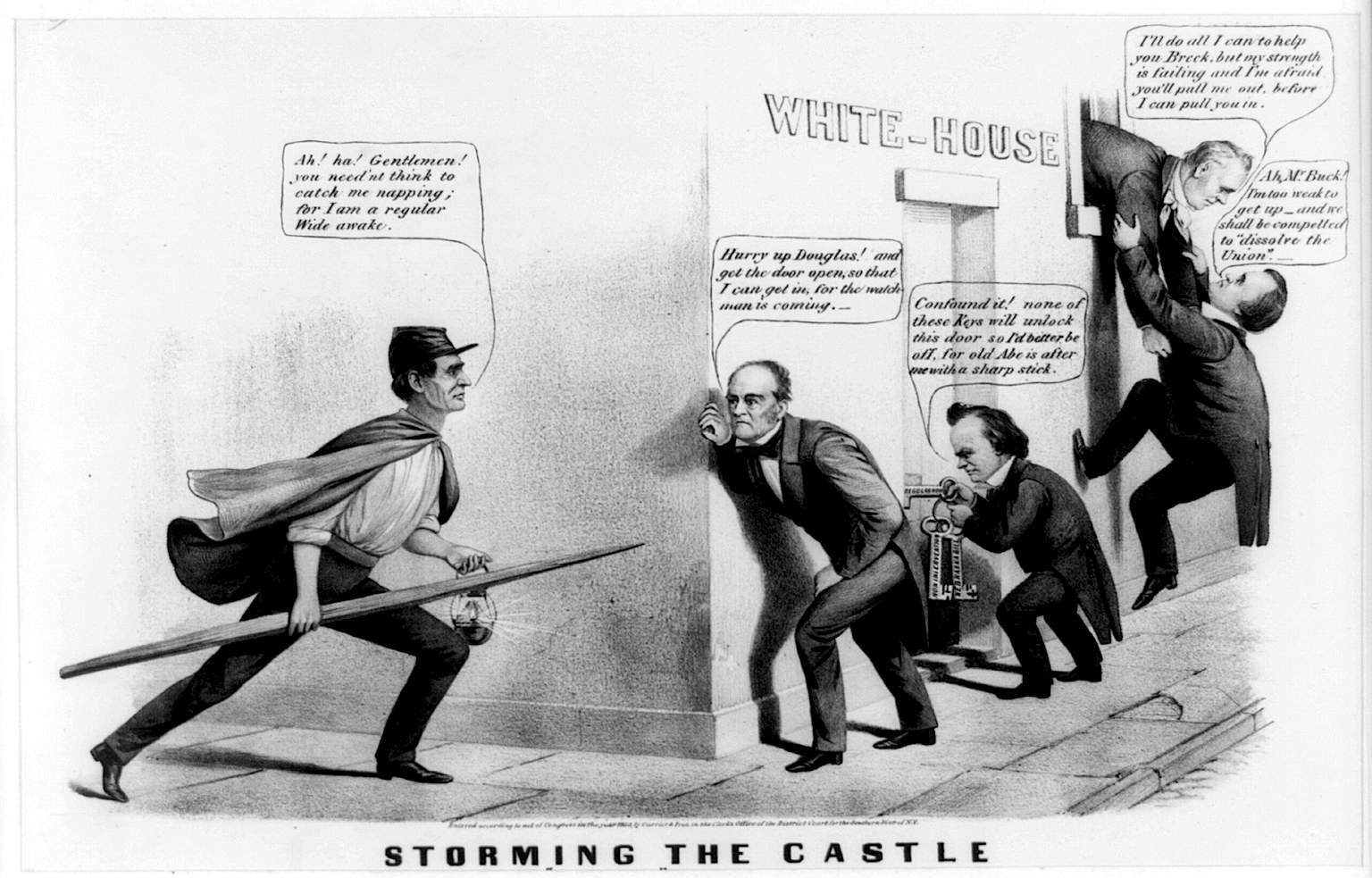This year marks the 250th anniversary of laying of the cornerstone of Lancaster's Trinity Lutheran Church. It also marks the 150th anniversary of the 100th anniversary celebrations (the "Centenary Jubilee") that occurred in 1861 also commemorating the laying of the cornerstone.
 |
| Frontispiece engraving to Centenary Jubilee, 1861 |
This event, to be held in May 1861, also was to coincide with the convention of the General Synod, the main denominational organization for the Lutheran church in America. Notably, the Lutheran Church had not split over slavery unlike just about every other denomination, and the Lutherans postponed the convention a year in hopes the war would be resolved and they would not have to split. Anyway, that didn't work out, and Trinity hosted the General Synod meeting in May 1862 which featured extensive debates that saw the Lutherans finally issue a
clear statement on the war and slavery. In the meantime, a local version of the Centenary Jubilee was still held in May 1861.
 |
Carte de visite of Trinity Lutheran Church, 1866 (vws)
Image by Charles Eberman while the church celebrated
the 100th anniversary of the church building's completion |
|
 |
View of organ from pulpit, 1866 (vws)
Also by Charles Eberman |
Although the church has a variety of tangential connections to the 79th Pennsylvania (e.g., Col. Hambright's parents were married there, Trinity's pastor G. F. Krotel baptized a child of Pvt. Lewis Jones of Co. H, 79th PA chaplain came from daughter congregation), I really just want to use Trinity as a vehicle to introduce a few issues relevant to this blog. As a fourth- or fifth-generation member of Trinity (well, technically former member since joining another church in Pittsburgh), I've amassed a file of documents related to Trinity and the Civil War and gave a couple presentations on lazy summer Sunday mornings, 2005-2007. Here's one of my
handouts from 2006.
The four issues I want to examine in a future post are:
- Lancaster's Timeline of Ethnic and Economic Development
- Wrestling with Slavery as a Moral Issue
- The Influence of War Democrats
- Soldiers Aid Movements in Lancaster
Not included is the religious worldview of the Civil War soldier as that would be stretching my primary sources a little too far, but look for some of the
Winebrennerian Church of God-affiliated soldiers to leave a better paper trail through the
Church Advocate newspaper. Lutheran newspapers of the time, including one temporarily removed from Maryland to Lancaster during the war with which Trinity's Pastor F.W. Conrad was affiliated, did give theological context to the war, but I have yet to find any connections to the 79th Pennsylvania.
 |
| F. W. Conrad (Trinity archives) |
In the meantime, here's one of my primary sources related to Trinity's wartime pastors from October 1862, which I will post now as October 1862 was an active time for the 79th Pennsylvania. It is Pastor F. W. Conrad's report of a four-man relief mission made to the Pennsylvania Reserves on behalf of the Patriot Daughters of Lancaster after the Battle of Antietam. John B. Kevinski was a locally famous musician occasionally affiliated with Trinity, Charles A. Heinitsch was a Lancaster druggist and Trinity vestryman, and John F. Seldomridge was a merchant and is the direct ancestor of Trinity's current President of the Vestry.
 |
Another civilian visitor to McClellan's army in October 1862.
Alexander Gardner [Public domain], via Wikimedia Commons |
Patriot Daughters of Lancaster Relief Mission to Antietam Battlefield
From the
Daily Evening Express:
30 September 1862, p. 2
The Patriot Daughters to-day sent six wagon loads of hospital stores for the sick and wounded in Maryland, besides many comforts for the Reserves. They went in charge of Messrs. J. F. Seldomridge, J. B. Kevinski, C. A. Heinitsh, and Rev. F. W. Conrad, who will superintend the distribution of the articles where they are most needed.
In this connection it is but right that while the P. R. R. Company are deservedly credited with the free shipment of all stores forwarded by the Patriot Daughters for our sick and wounded, the public thanks are due to our friend, Andy Balmer, teamster, who does the hauling gratuitously, and to Messrs. Boyle, Myers and Youngman, who cheerfully aid in expediting the good work, and have rendered much aid in the prompt forwarding of their stores.
4 October 1862, p. 2
An Excursion to the battle-fields in Maryland and a visit to the Reserves, by Messrs. Chas. A. Heinitsh and J. B. Kevinski will be noticed more at length as soon as we can get a full account of it. They report the Reserves so healthy that not a sick man is in the hospitals. Our two friends made a night march from Sharpsburg to Hagerstown on Thursday night, coming home to Lancaster on Friday afternoon. We will give a history of the trip hereafter.
10 October 1862, p. 1
Report likely written by Charles Heinitsh and John Kevinski
16 October 1862, p. 2
A Week Among the Soldiers in the Hospitals.
Messrs Editors Express: At the request of the “Patriot Daughters,” the writer consented to accompany a large lot of provisions and hospital stores, donated by the loyal people of the city and county of Lancaster for the comfort of their brave representatives in the army, and the relief of the sick and wounded in the hospitals of Maryland. Messrs. Heinitsh, Kevinski, and Seldomridge were appointed our associates in this mission of gratitude and mercy.
We left the depot with our freight on Tuesday, the 30th day of September. At Harrisburg we impressed all the porters and stragglers we could lay hold of, in order to be able to transfer all our cargo in good time to the baggage car of the Cumberland Valley Railroad train, and succeeded in getting it all unloaded, but not in getting it all on board. We were, consequently necessitated to leave seven barrels and two boxes in the care of a colored porter, leaving orders to send forward by the next train. After the hurry and bustle, sweating and confusion connected with this transshipping process, we proceeded on our way and arrived at Hagerstown after night.
Here we found it impossible to store our goods, and hence left them in the car till morning. Then the question arose, how shall we get them to the places of their destination? Wagon could not be had either for love or money. Undertakers asked us from $15 to $25 for the use of a one horse spring wagon to bring up a corpse from the battle-field only ten miles distant. Having lived here, we were acquainted, and put our ingenuity to work to avoid these extortion breakers right ahead of us. A messenger was dispatched to the county, and the four horse team of one of our old parishioners was engaged, and before 8 o’clock on Wednesday morning we had unloaded our car and were loading our wagon. A watch was placed over the stores we could not take, a wagon guard was detailed, in the person of one our committee, better versed in drugs, while the rest of our party started for the hospitals near Sharpsburg and Keedysville, accompanied by the Rev. Mr. Evans, to whose kindness we are indebted for the use of a horse carriage.
We soon found scores and hundreds of sufferers, distributed in barns, out houses, and tents, and that there was more or less want every where. But we likewise discovered, that the personal distribution of our hospital stores, would be accompanied with considerable difficulty. To do this to the best of our advantage, would have required an examination of the peculiar wants of each hospital, and almost of each patient, which our limited time would not allow us to undertake. Providence, however, provided for this dilemma. We found Mrs. Dr. Harris, the wife of an army officer here, devoted since the breaking out of hostilities to this very work. She has a man servant, an ambulance and two army wagons at her disposal, and is aided in her benevolent work by Miss Tyson, of Maryland, and Miss Hall, of Washington. The former has her headquarters in a common tent, and the young ladies in the loft of an old house. She had just made arrangements by which she secured a room in Sharpsburg, in which to store away supplies. We accordingly determined to place the stores entrusted to us to her care and left her with the promise of meeting her in the afternoon.
We now made a reconnoisance of the battlefield, and then proceeded direct to the camp of the Reserves. We soon overtook our wagon which stalled at a steep hill. We first detailed a squad of soldiers, to make up the deficiency of our animal force, but finding their pushing unavailing, we found our forlorn hope in two little mules. They seemed to realize that much was expected from them, and they carried the load up the hill in gallant style. By this time the Lancaster boys found out who were about, and what was coming. The wagon was at once besieged, the portion allotted to the Reserves unloaded in double quick style, greetings were exchanged, questions asked and answered, messages delivered, loved ones remembered, and general joy prevailed. On being told that what we brought was not half of what was sent, two wagons were dispatched to bring on what had been left at Harrisburg and Hagerstown, and on Thursday morning they returned with all of it.
This done we accompanied our wagon to Sharpsburg. It was almost sundown when we got there. After finding Mrs. Harris, and making provision for depositing the hospital stores in her ware room, we returned to Hagerstown, while the other members of the committee spent the night in the camp among the soldiers. The interesting scenes transpiring on Thursday, at the distribution of the good things among our brave boys, have been already referred to, and need not be repeated. The note-worthy incidents occurring at an extra supper, to which certain gentlemen from Lancaster were invited, we leave to Mr. Sypher, the correspondent of the Tribune, and who was one of the party, to chronicle with his own pen; and for a description of certain other extraordinary occurrences, which took place on a celebrated night march of 16 miles, accomplished on foot from 8 P. M., to 4 A. M., with heavy baggage, consisting of an overcoat full of army trophies, a foreign knapsack filled with personal property, and a log about two feet in length and ten inches in diameter, through which a solid shot had passed, we refer your readers to the descriptive powers of Messrs Heinitsh and Kevinksi.
On Friday we visited Mrs. Harris again, for further consultation relative to the supplies entrusted to her, and it affords us great pleasure to assure the Patriot Daughters, as well as, the donors, that their gifts of charity will be dealt out judiciously to the needy and suffering. As we were crossing the battlefield, on our way to the camp again, we suddenly came upon the entire corps of General Hooker, drawn up in a line of review extending not less than two miles, awaiting the President, and the Commander-in-Chief of the army of the Potomac. We took a position and awaited the appearance of the distinguished personages. At about 3 o’clock in the afternoon their approach was indicated by the firing of a salute, and their progress by vociferous cheering. Civilians as we were, we formed in a line, and had the gratification of again beholding the noble form of Abraham Lincoln, and of greeting our eyes for the first time with a sight of General McClellan. Space forbids an attempt at description. Suffice it to say that it was a sight at once grand and imposing, whose impressions memory will retain while life shall last.
Saturday was spent in visiting some of the members of our former charge, and Sabbath in preaching to crowded congregations in our old church. The hallowed memories of the past were revived, and we realized that it was good to be there. On Monday morning we left for Baltimore, passing through Boonsboro, Middletown and Frederick. At all these places, we noticed large numbers of the wounded. At Frederick there are not less than 3,000. There is but one church unappropriated to their use, in which all denominations worship alternately. The good women are engaged day and night in ministering to the suffering. The ministers, relieved in a great measure from preaching, devote most of their time to the hospitals. On passing the field of South Mountain, we learned that within the gun-shot of the road rebels were still laying unburied. We saw and conversed with a number of Rebels wounded in different hospitals. To the question, why they had taken up arms against our glorious government, they could hardly give an intelligent reply. A German told us: “We are working people; when the war broke out we had no work, and we had no other way but to go into the army or starve.” To the question; “What are you fighting for?” One replied; I don’t know, but our leaders know;” another, “for our Confederacy.” But what right had you to set up your bogus Confederacy? “I don’t know.” From personal observation, and all that we heard from others, there is no doubt about the fact, that the privates are heartily sick of the war, but that the leaders are determined to persevere to the bitter end.
We returned last Wednesday, thankful for the privilege of devoting a week, to the comfort of the noble men who stood up as a living breast work between us and danger, on the field of Antietam. We saw much, heard much, felt much, and learned much during our visit, and came back with a heart still more deeply impressed with love of country, with sympathy for its suffering heroes, and with gratitude and honor for its illustrious defenders.
On behalf of the Committee,
F. W. CONRAD.
Lancaster, Wednesday Oct. 15, 1862.








































